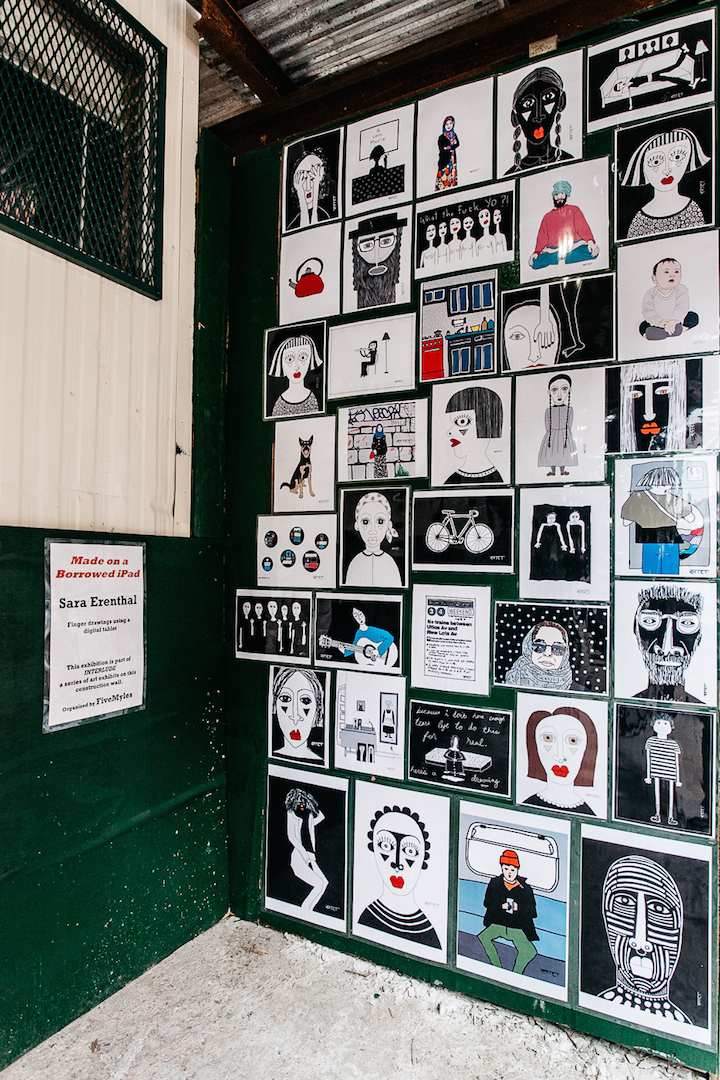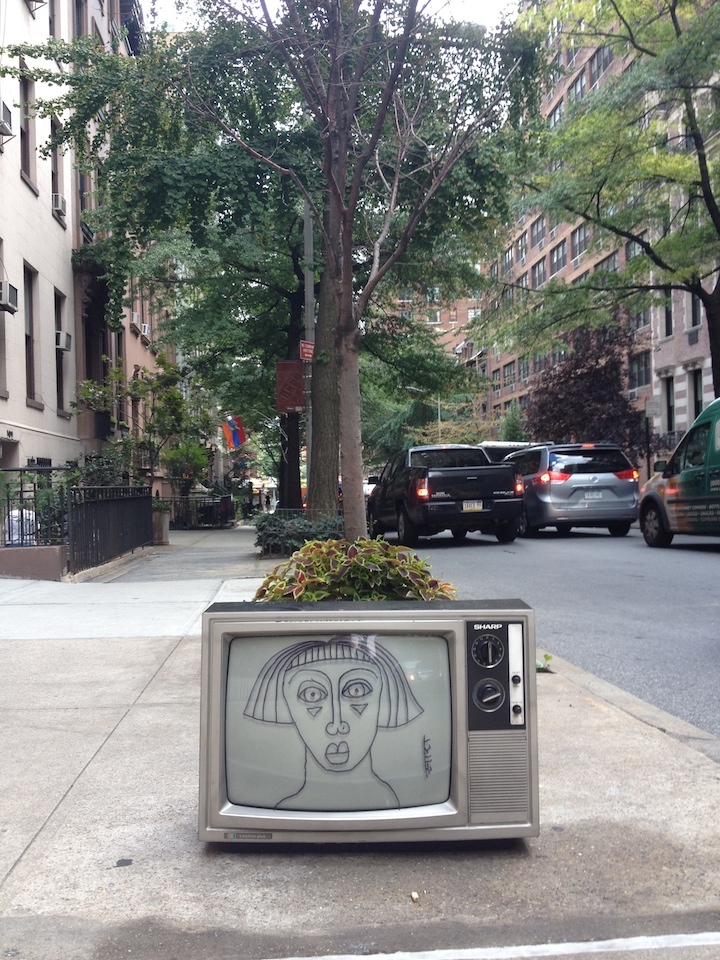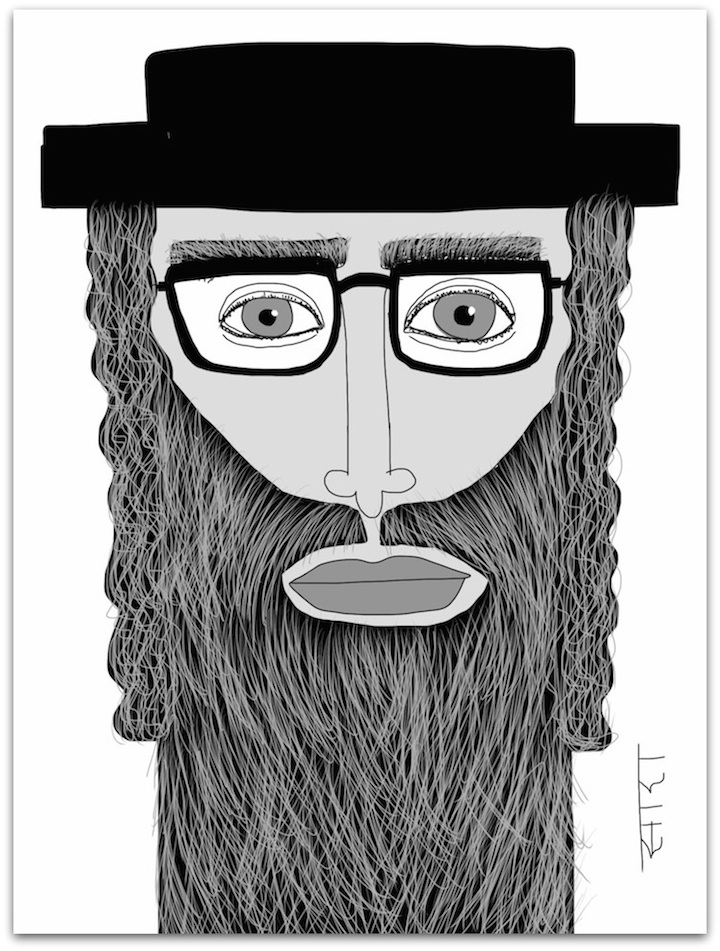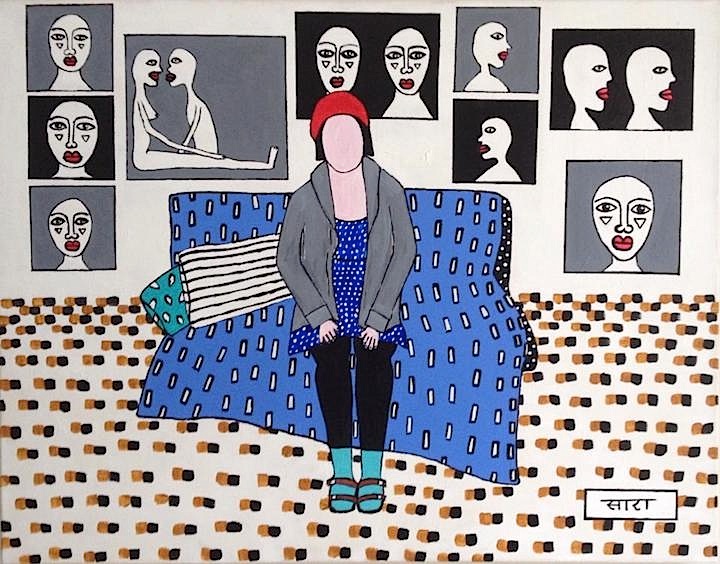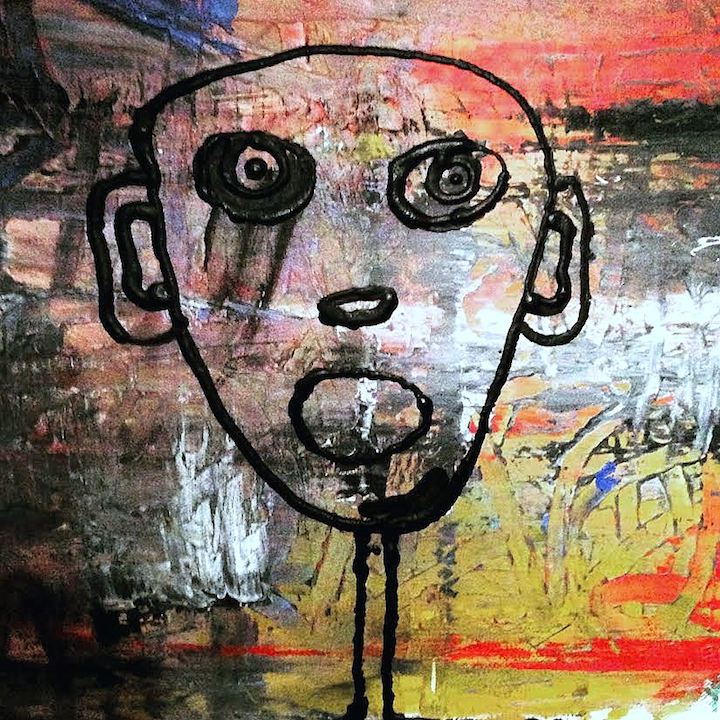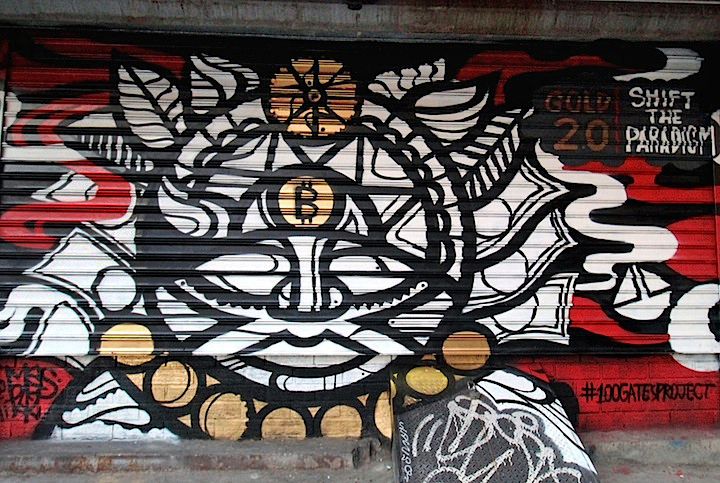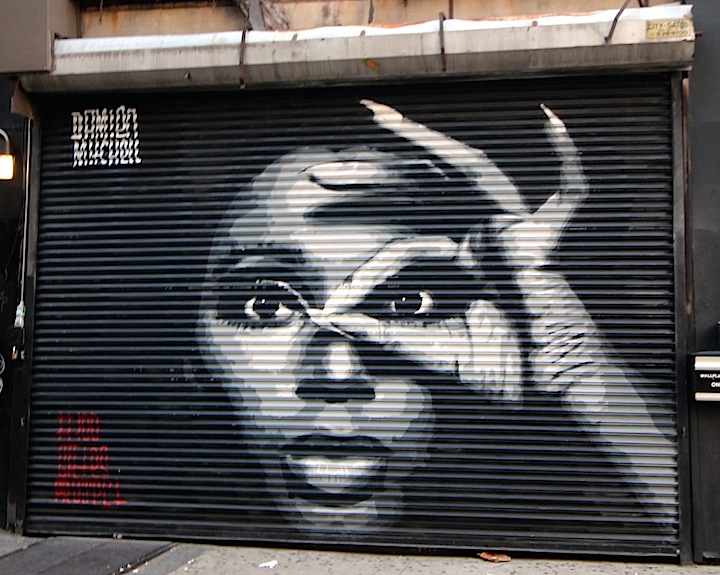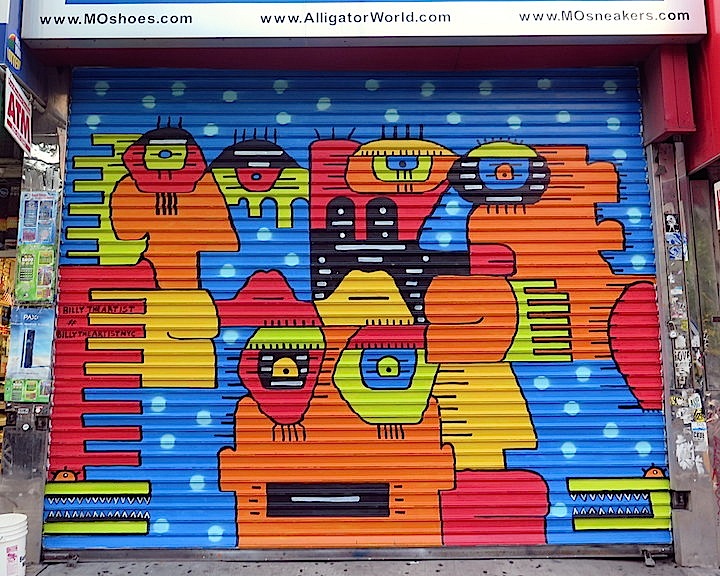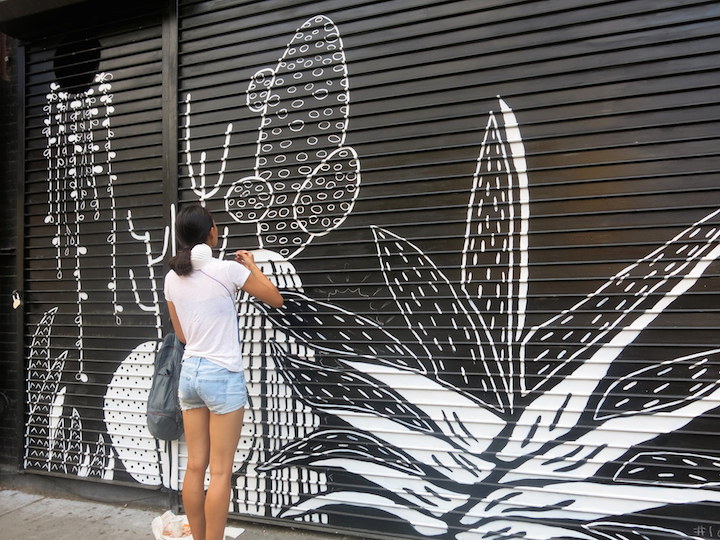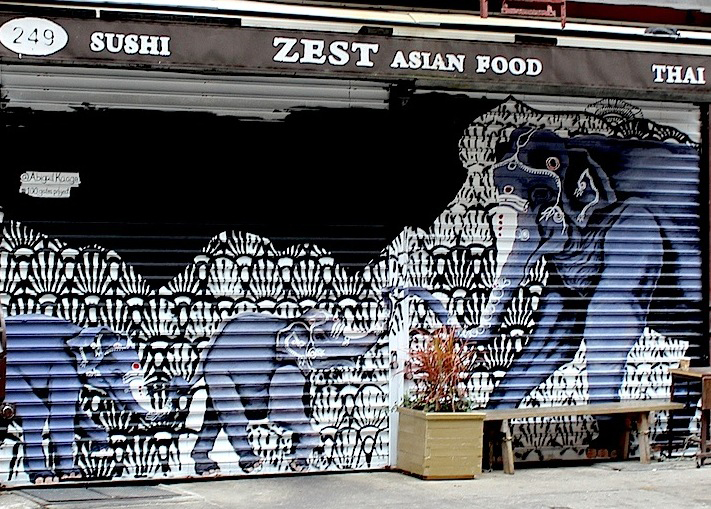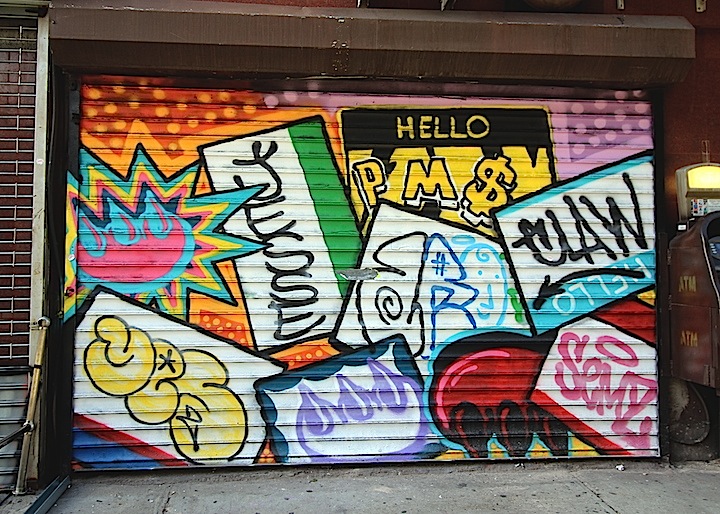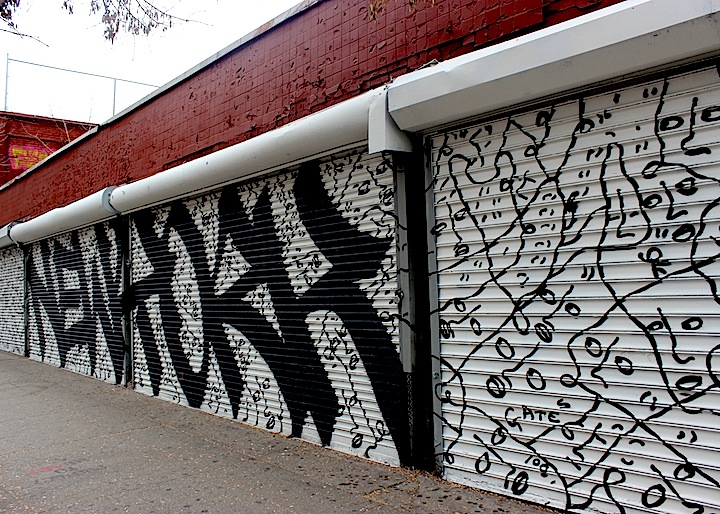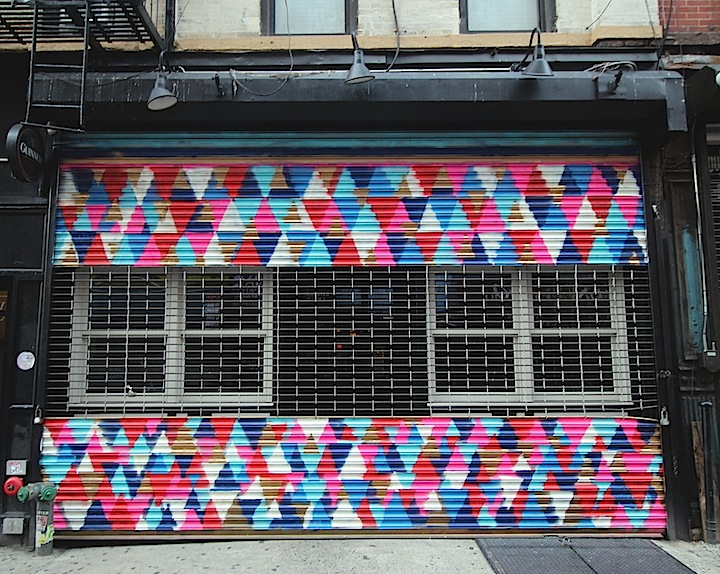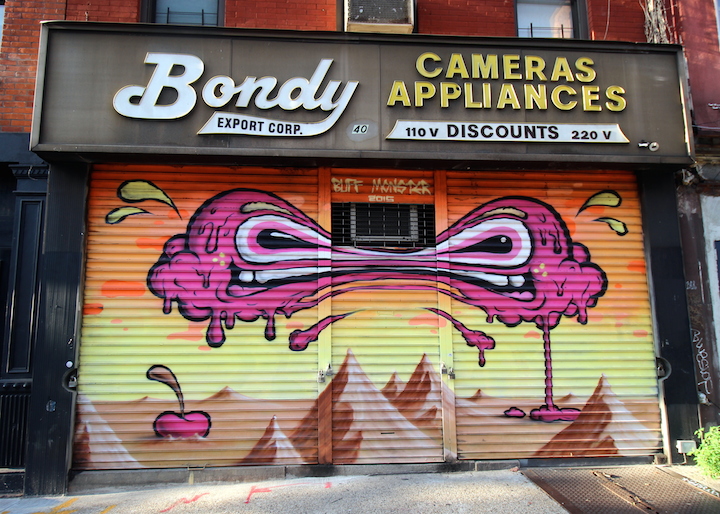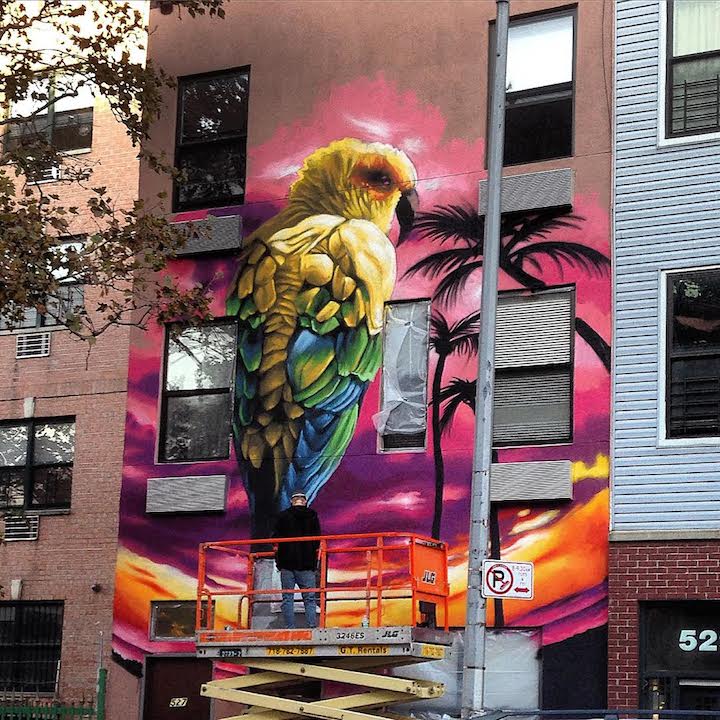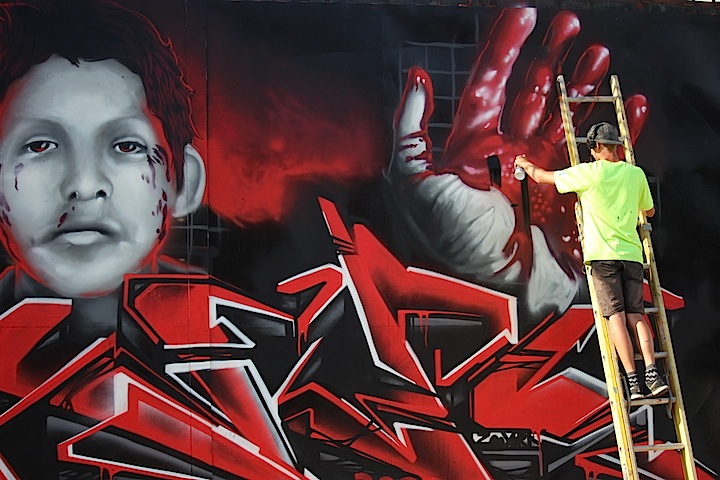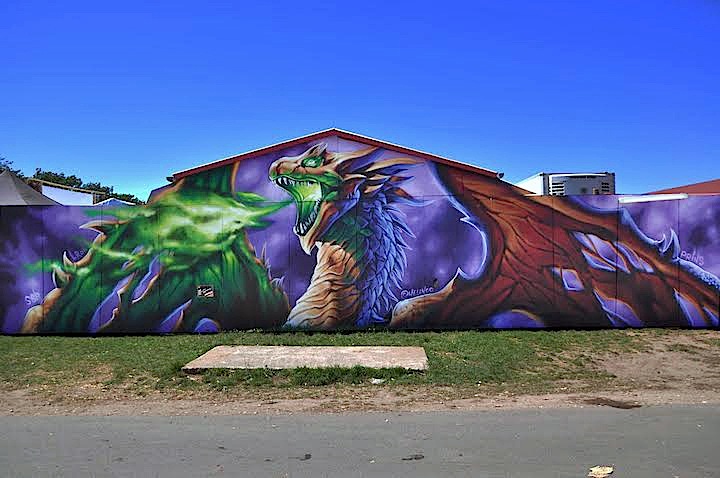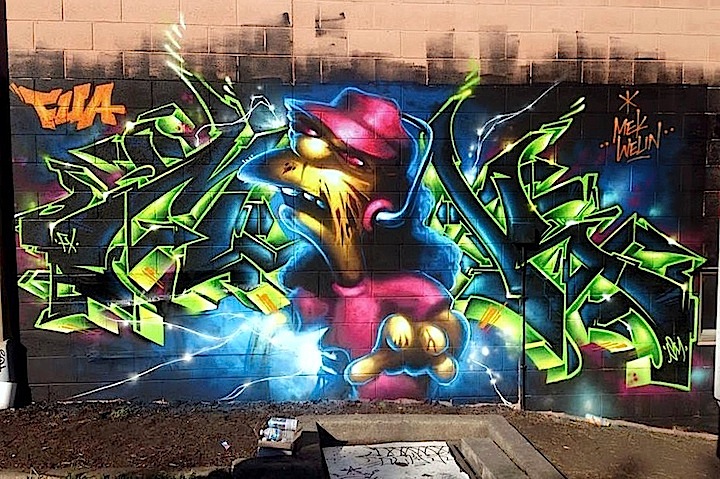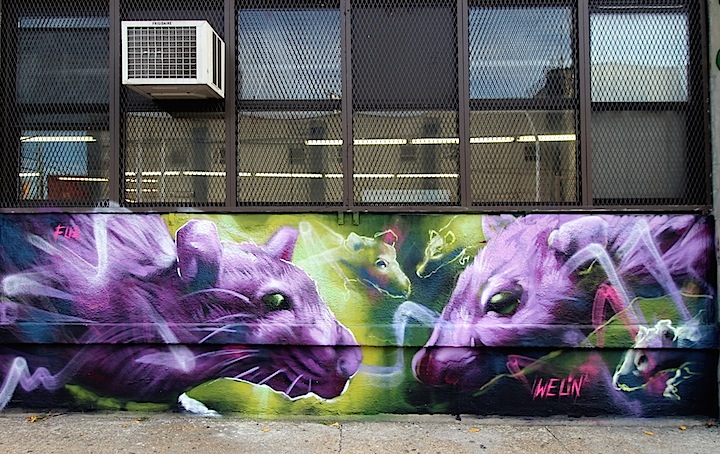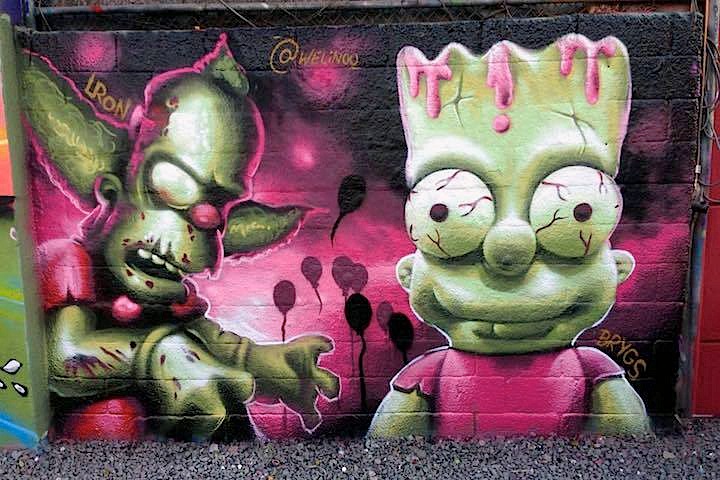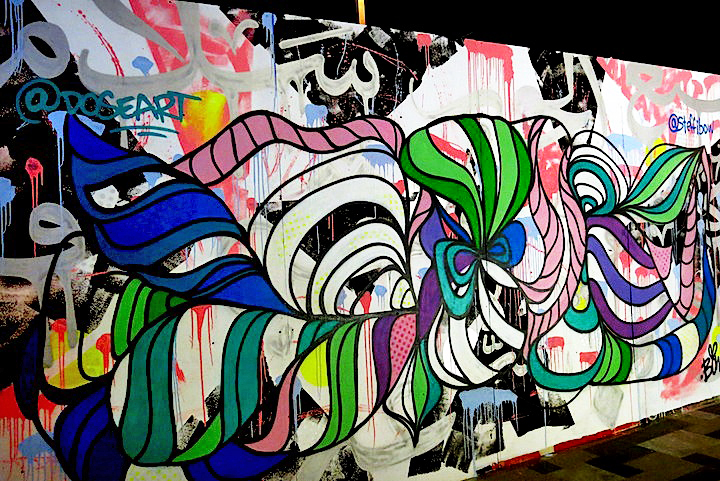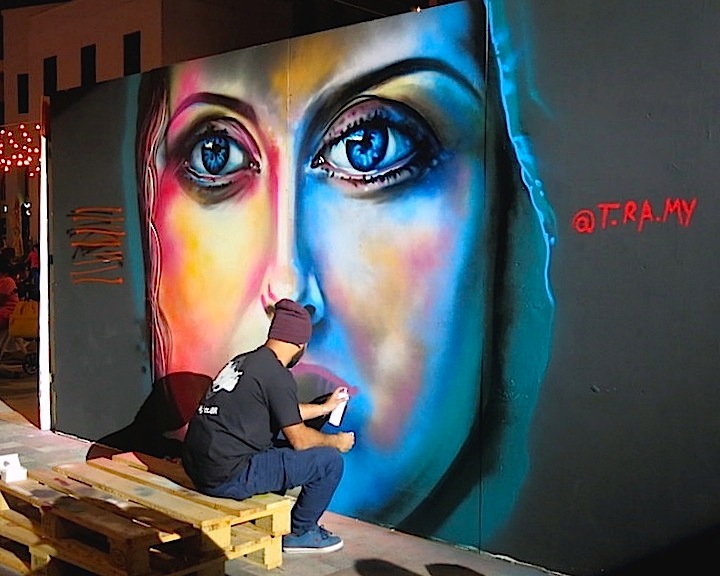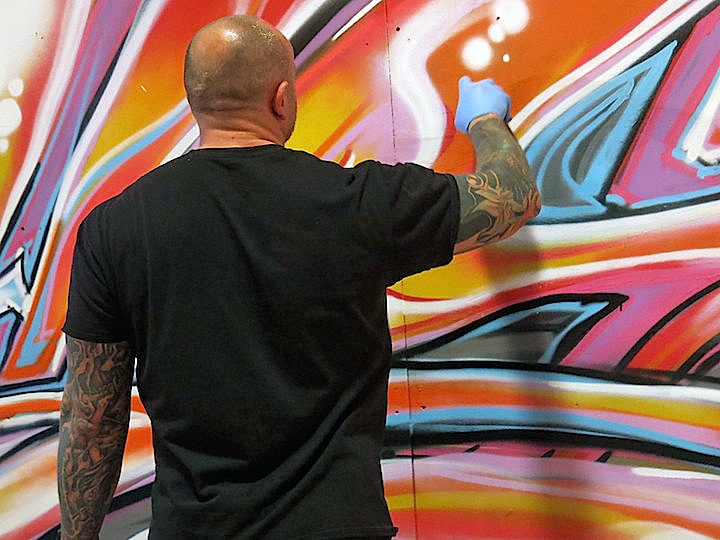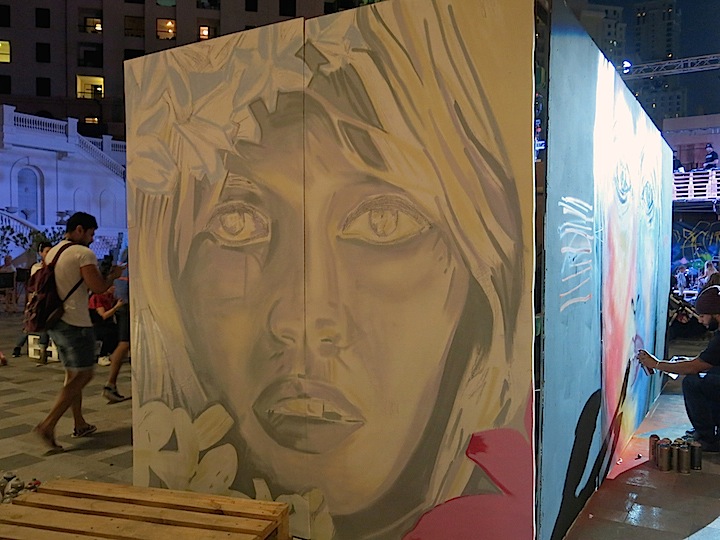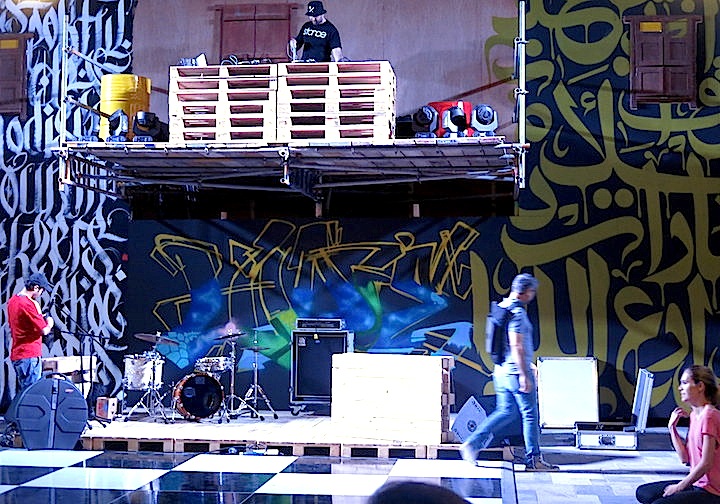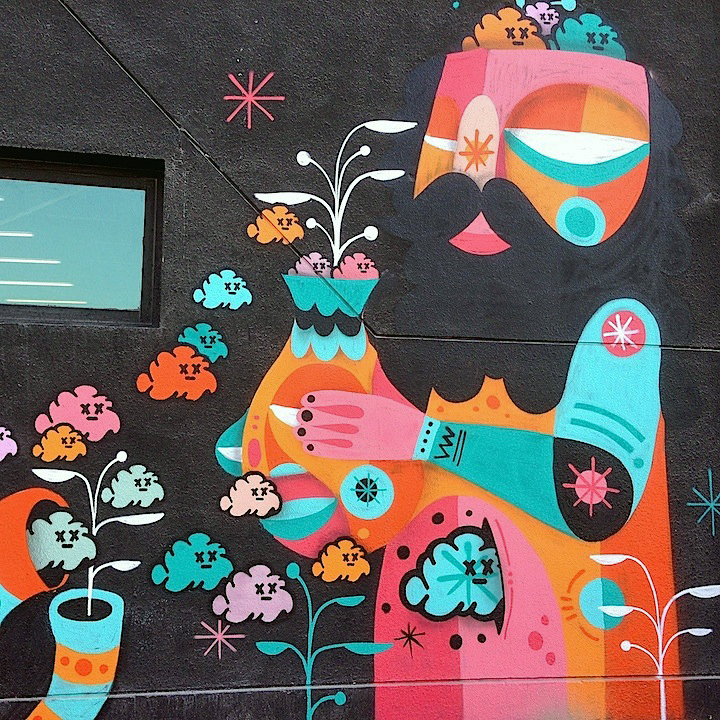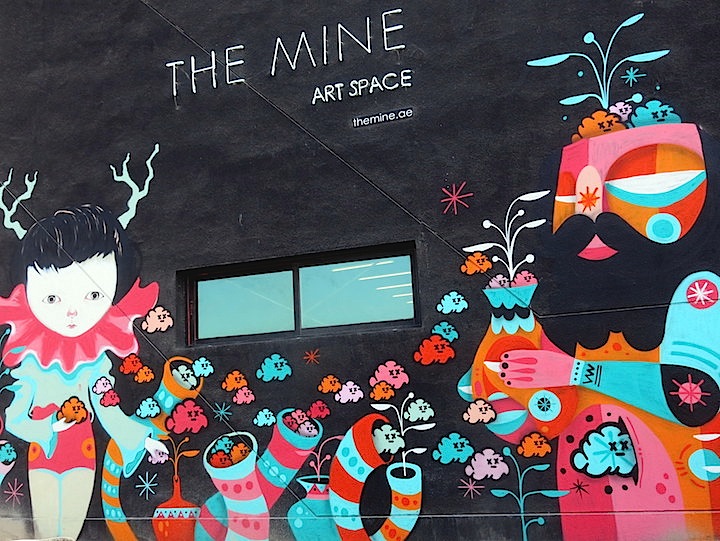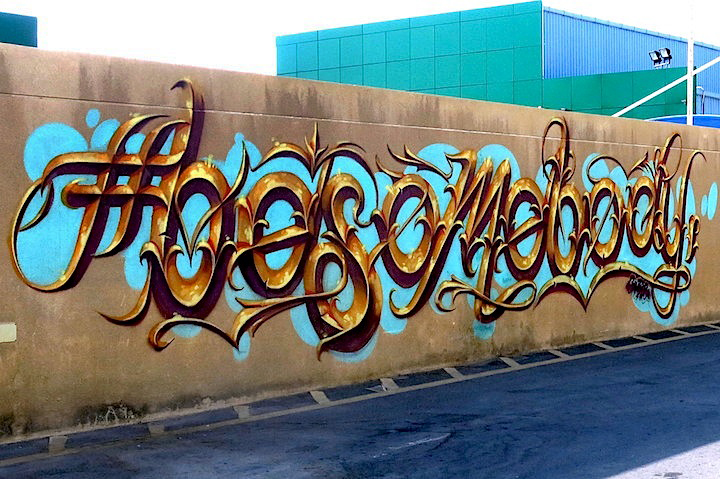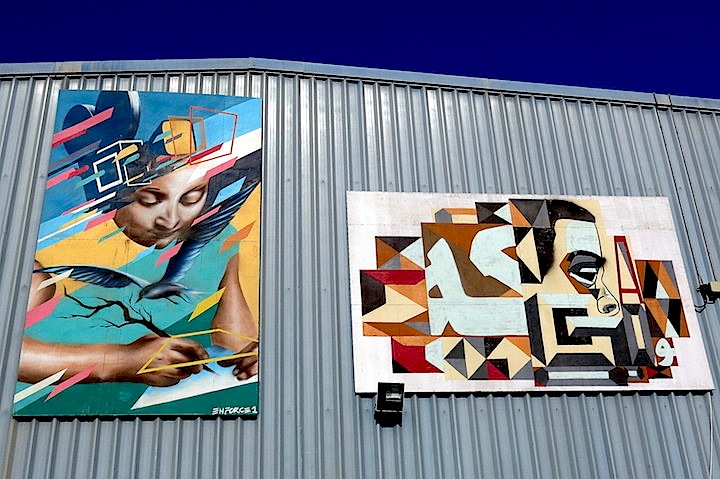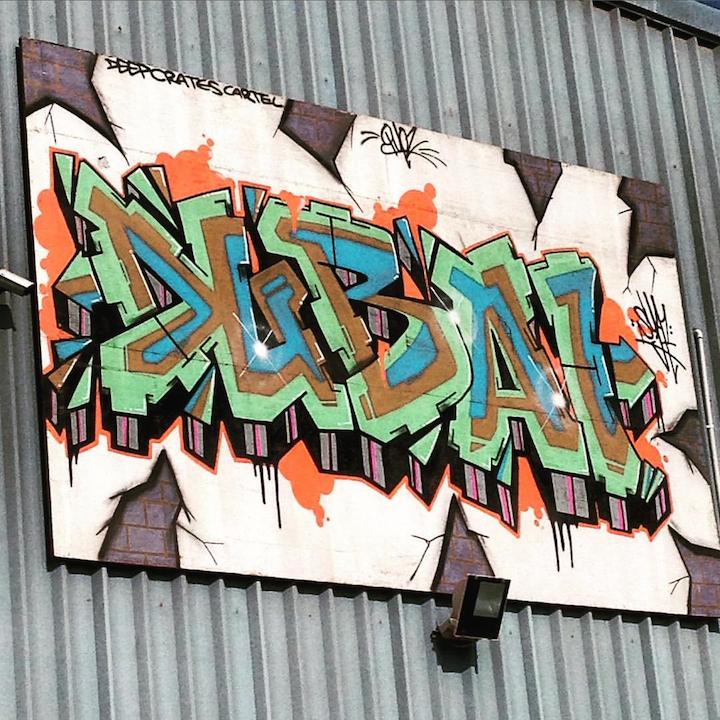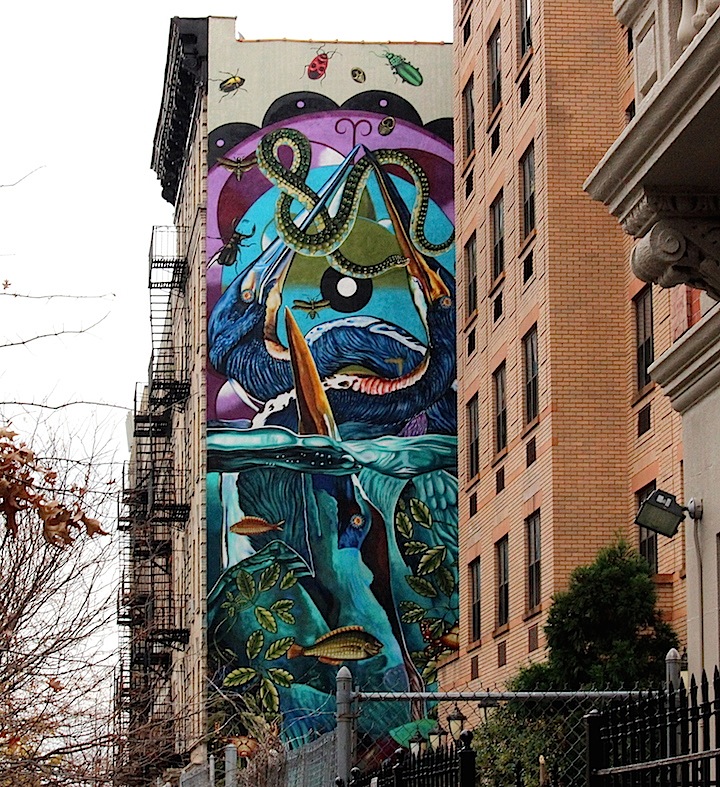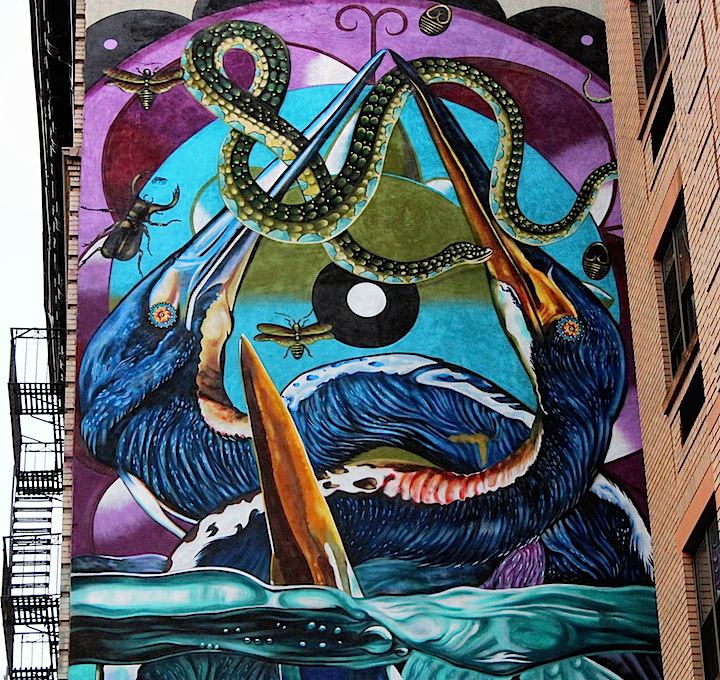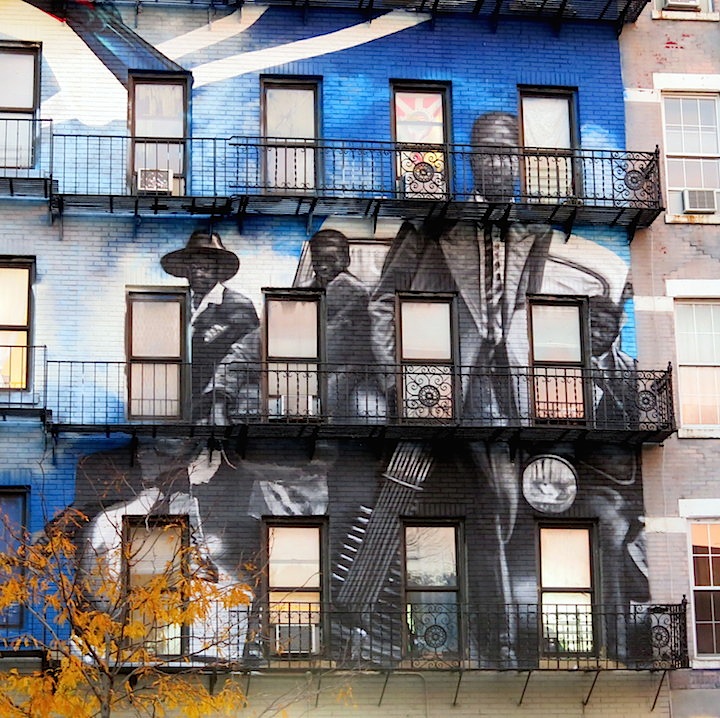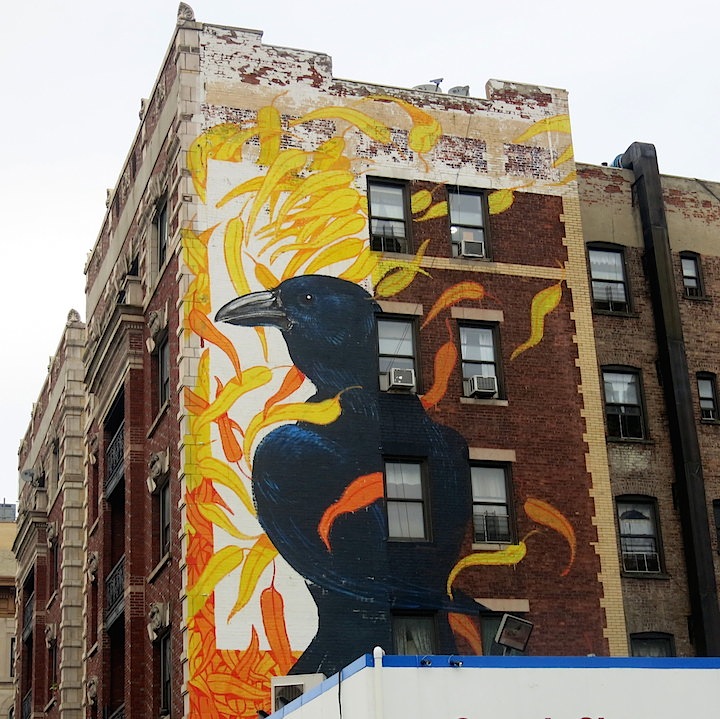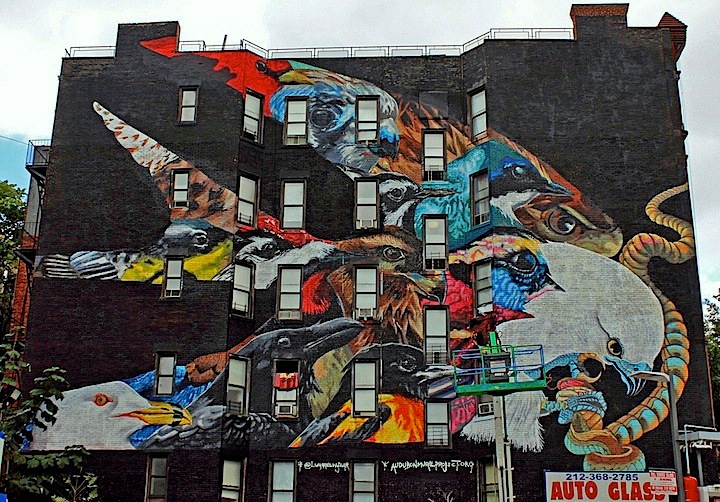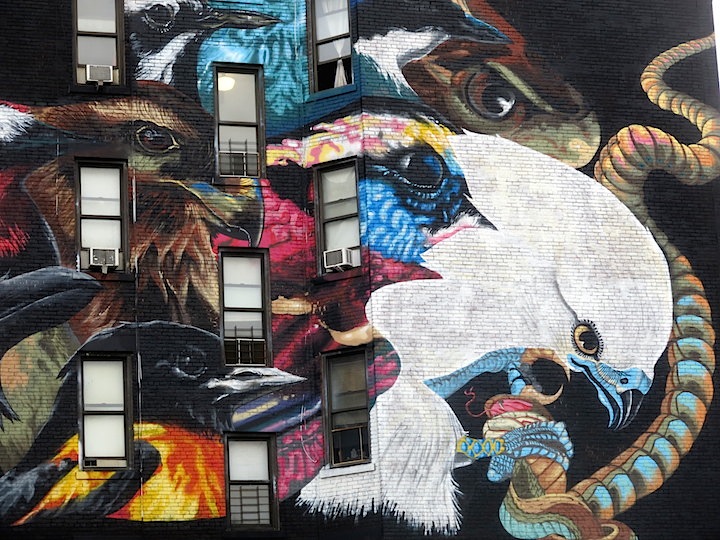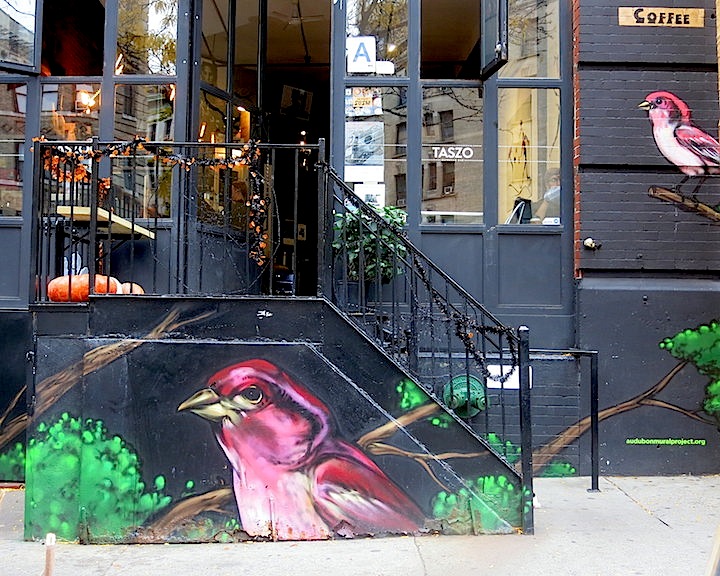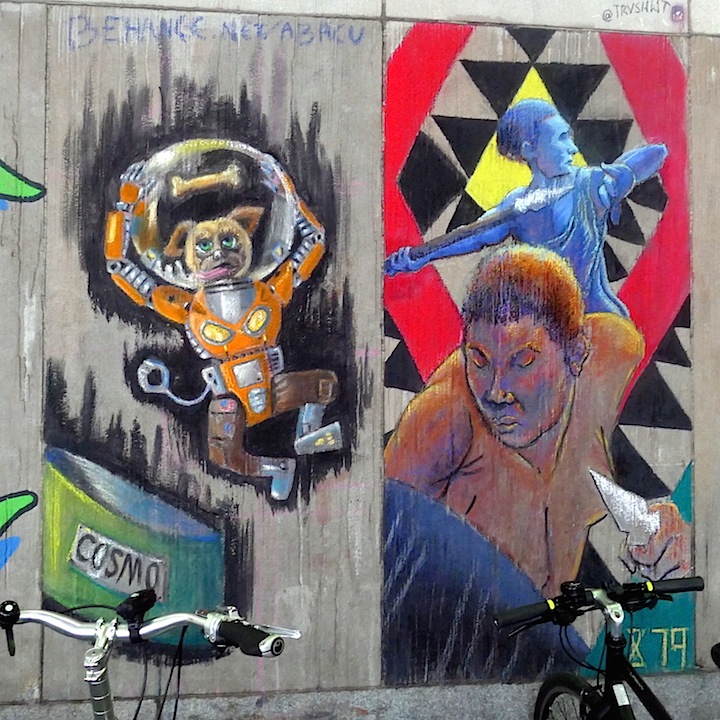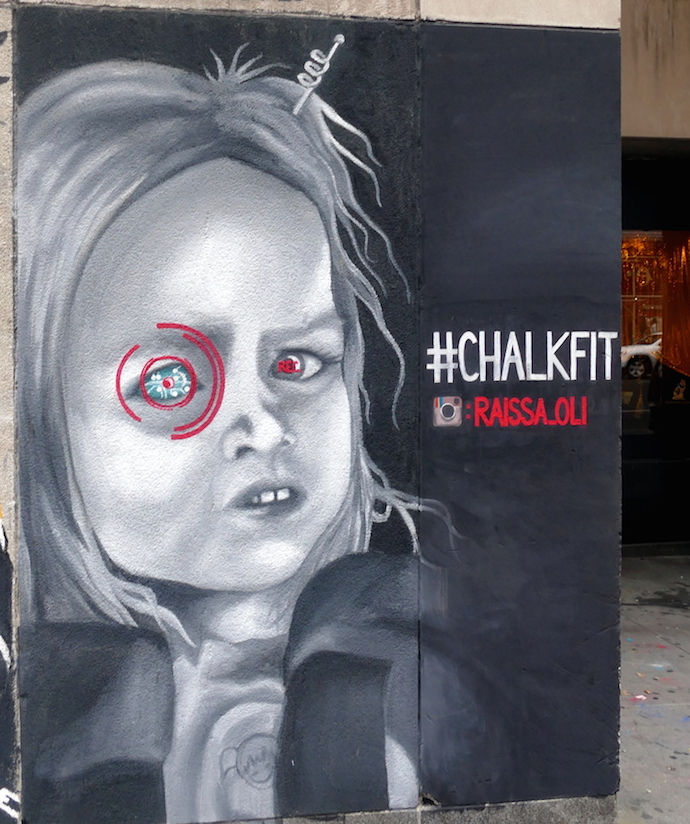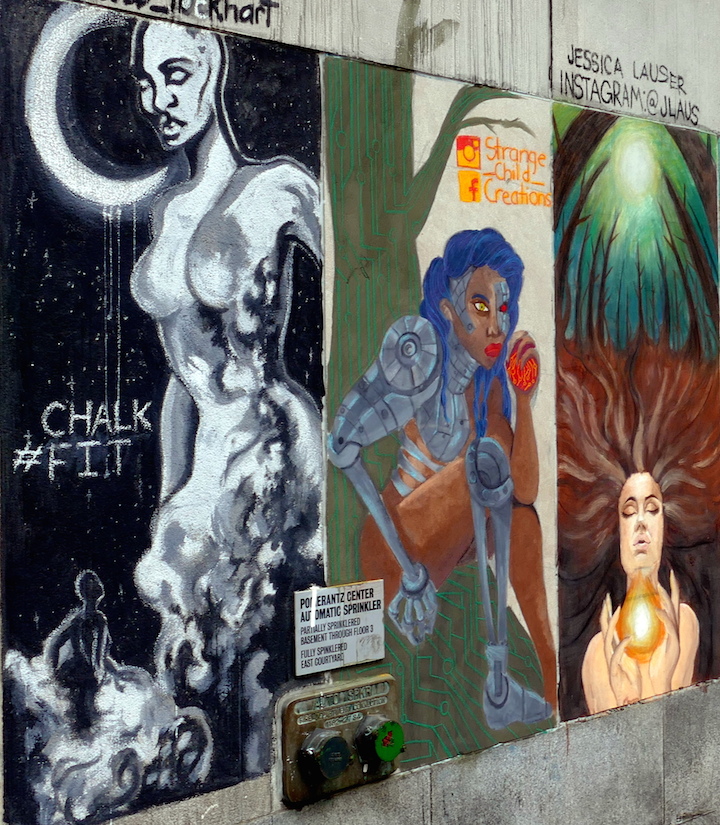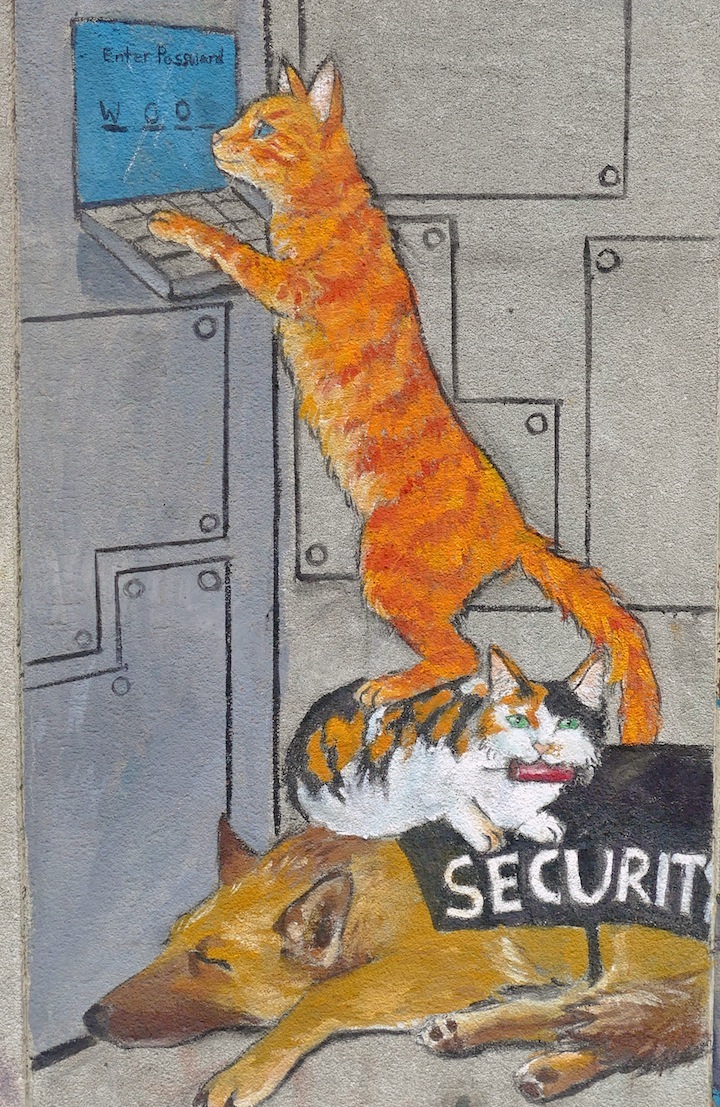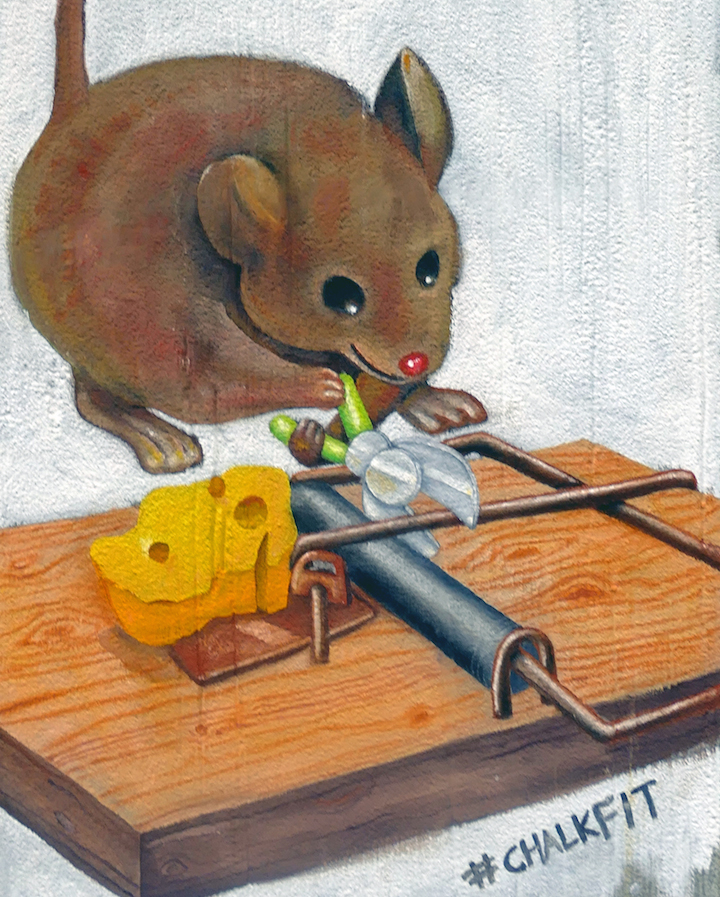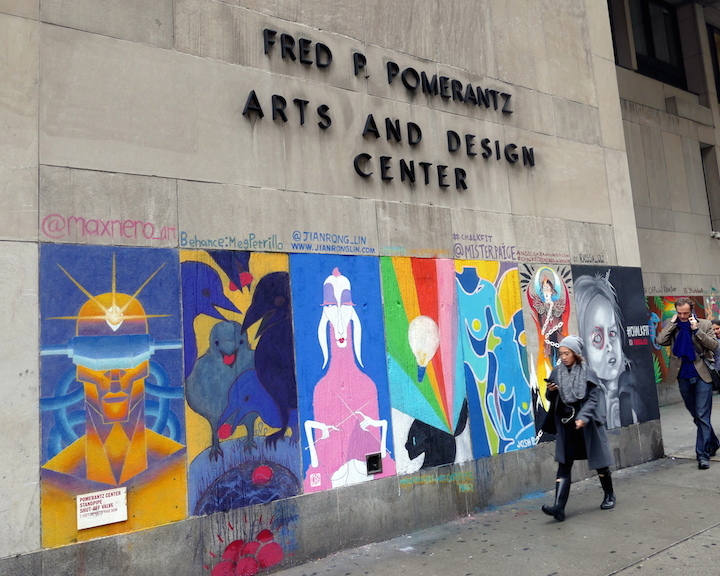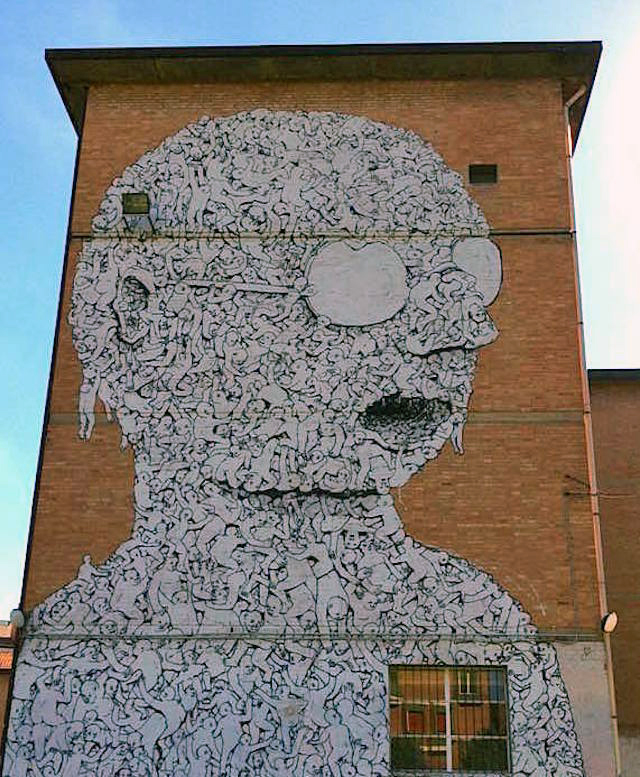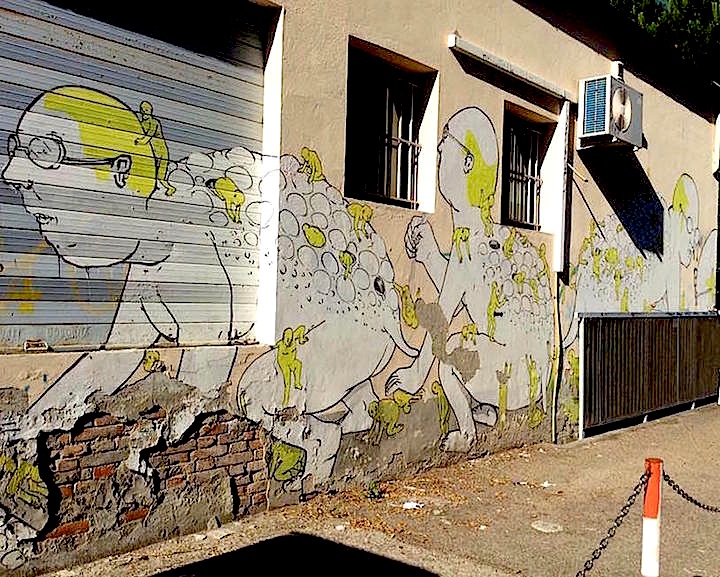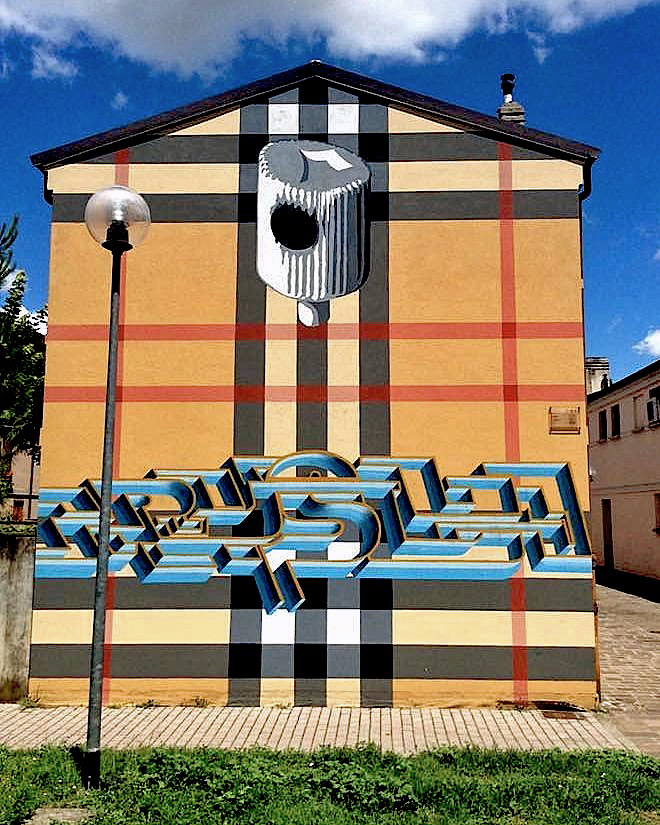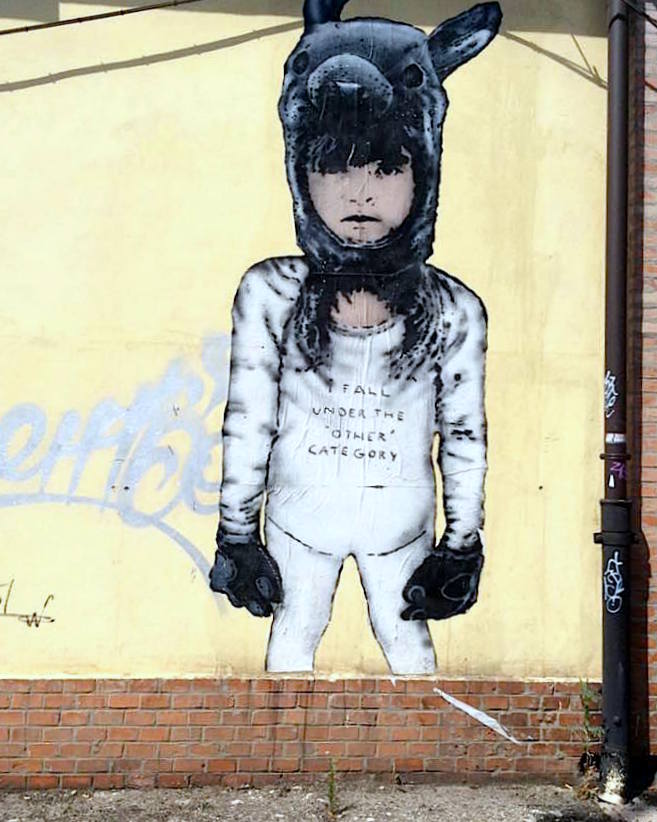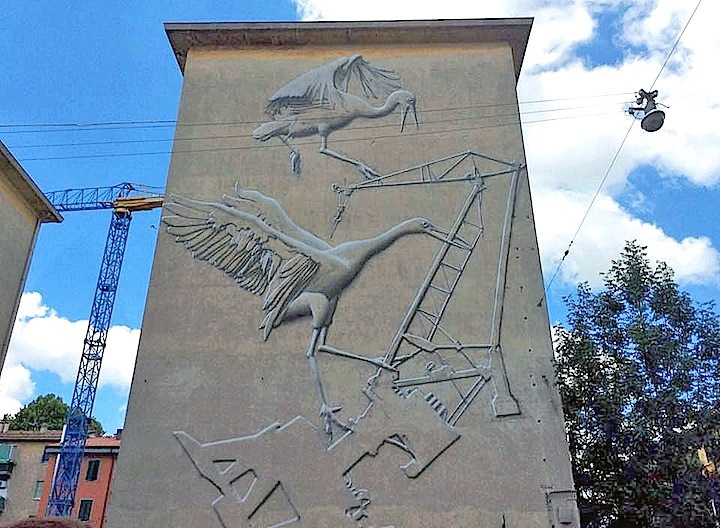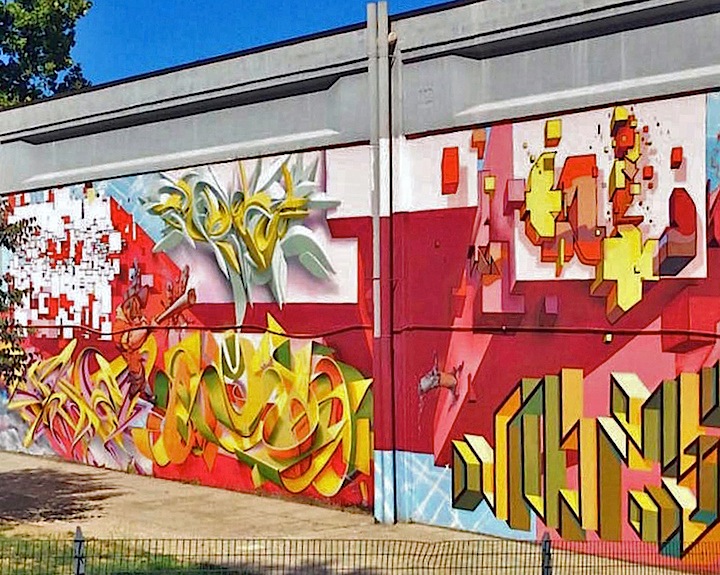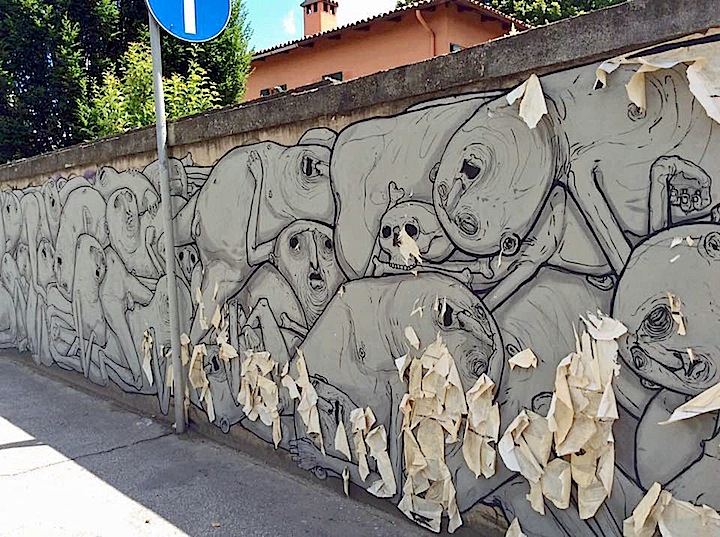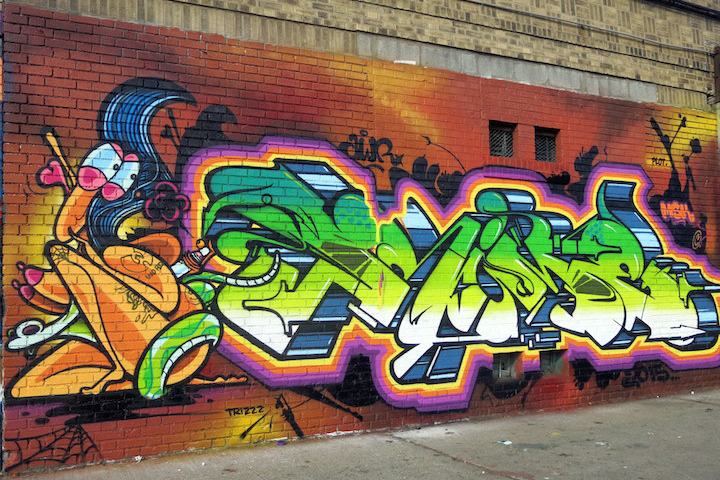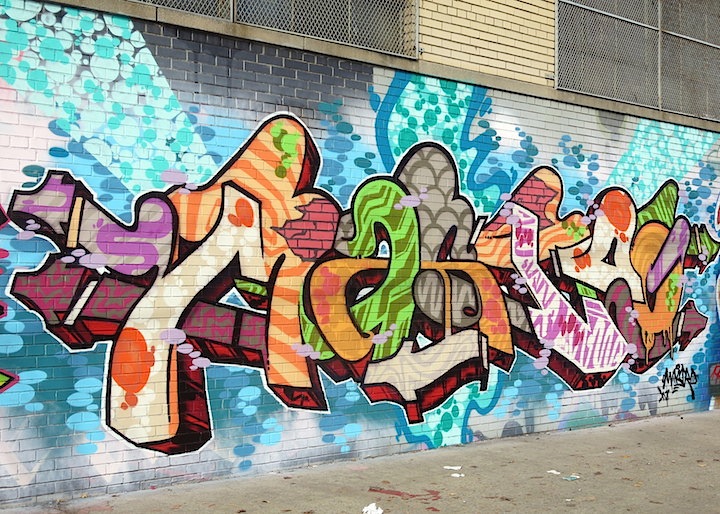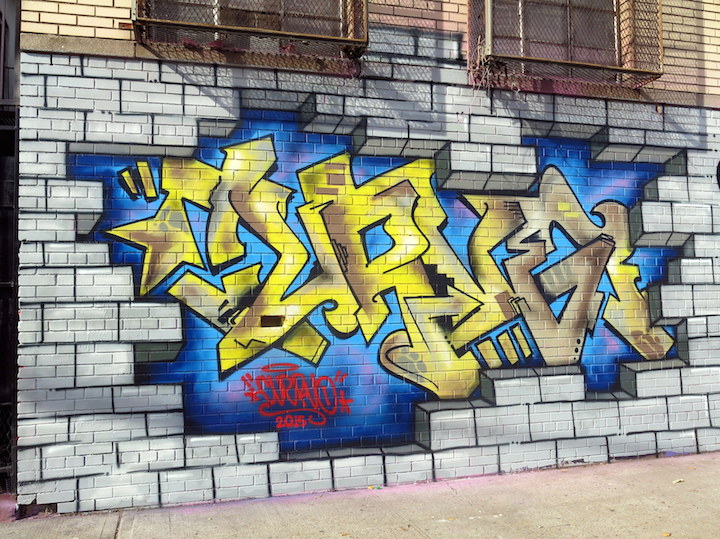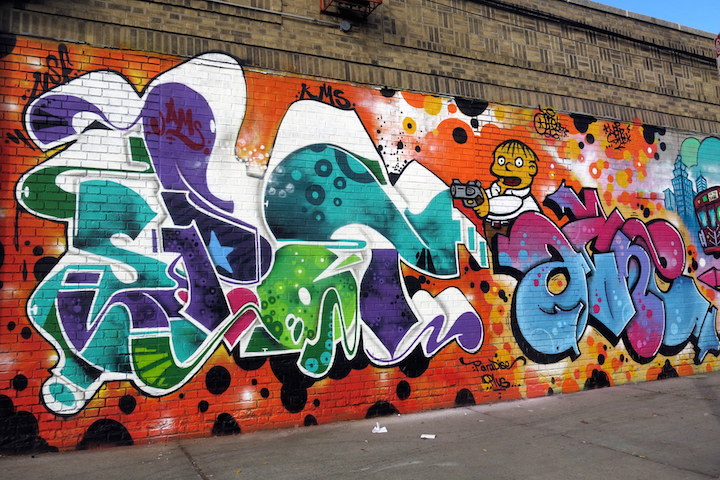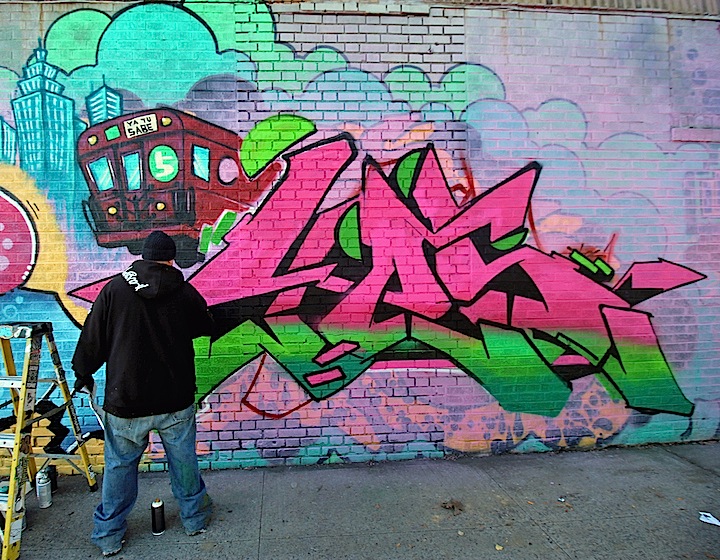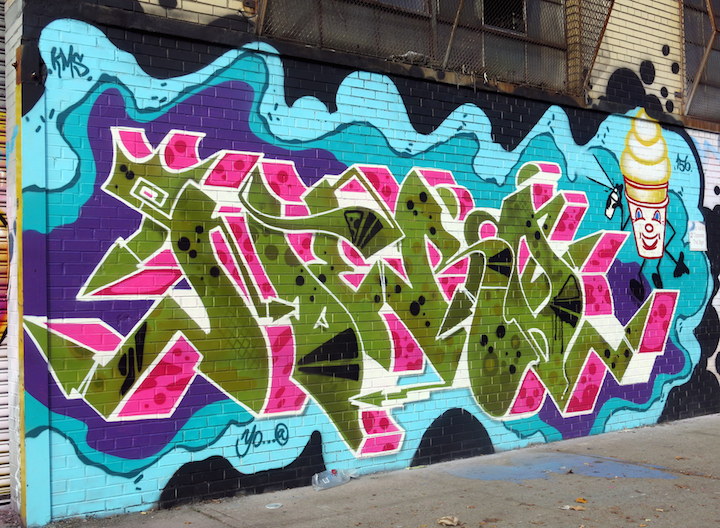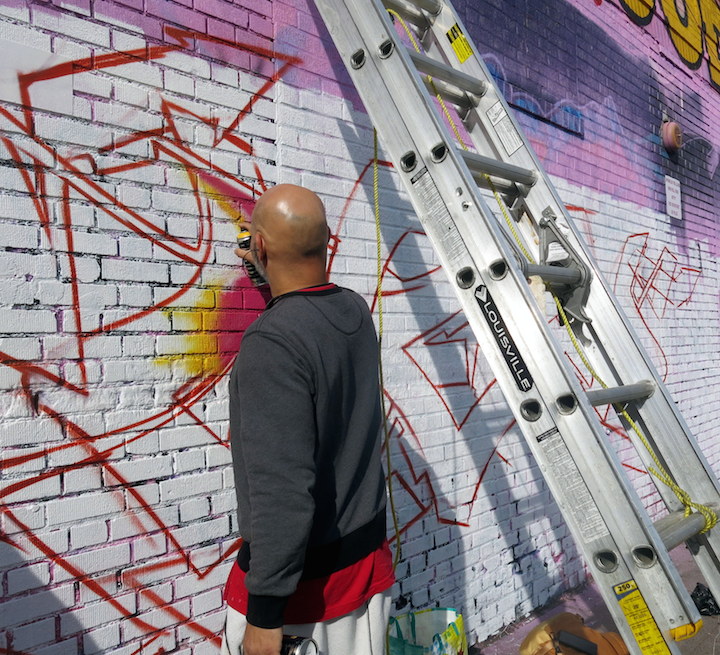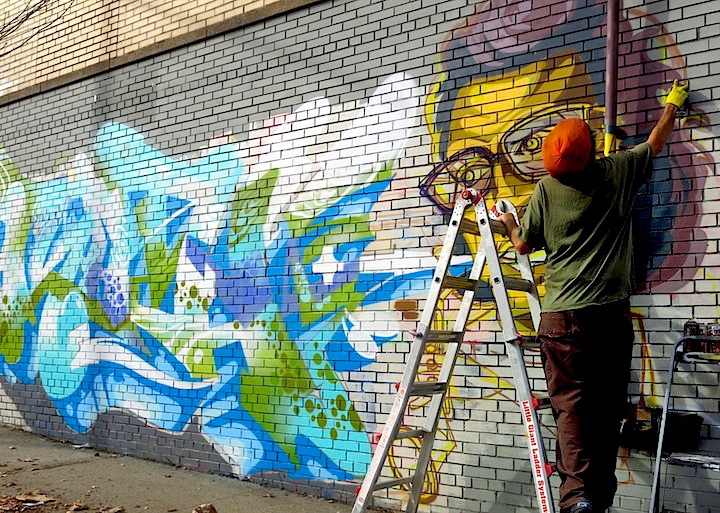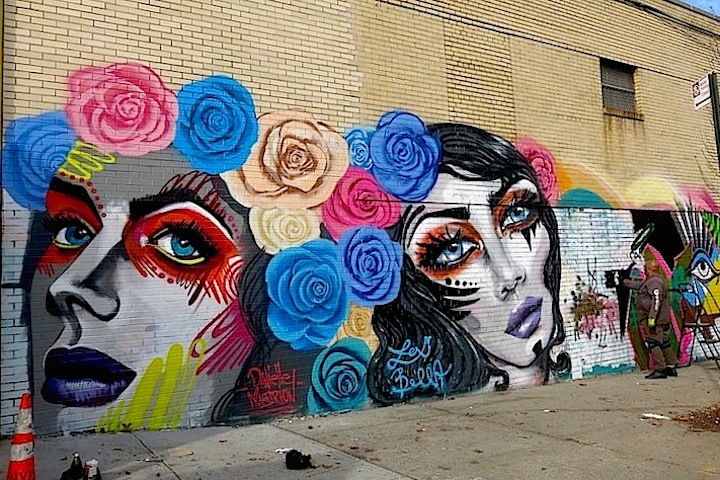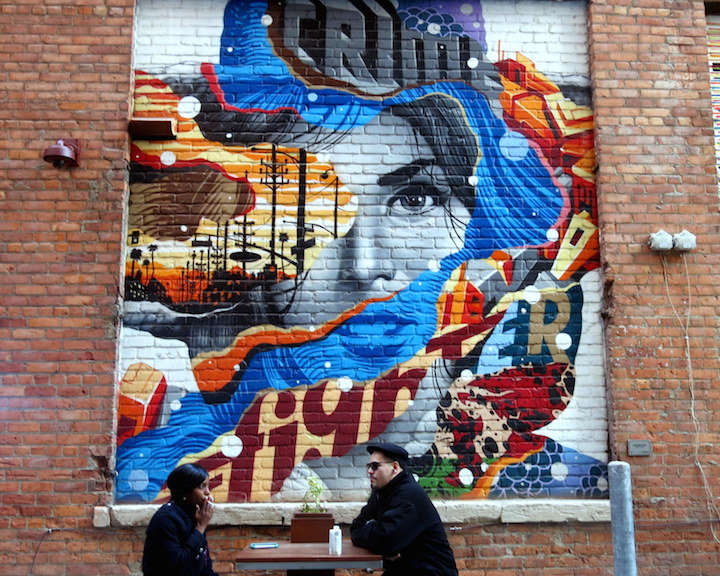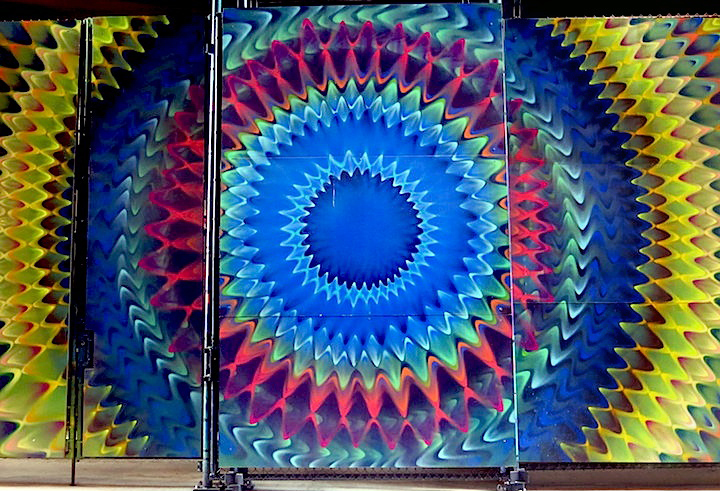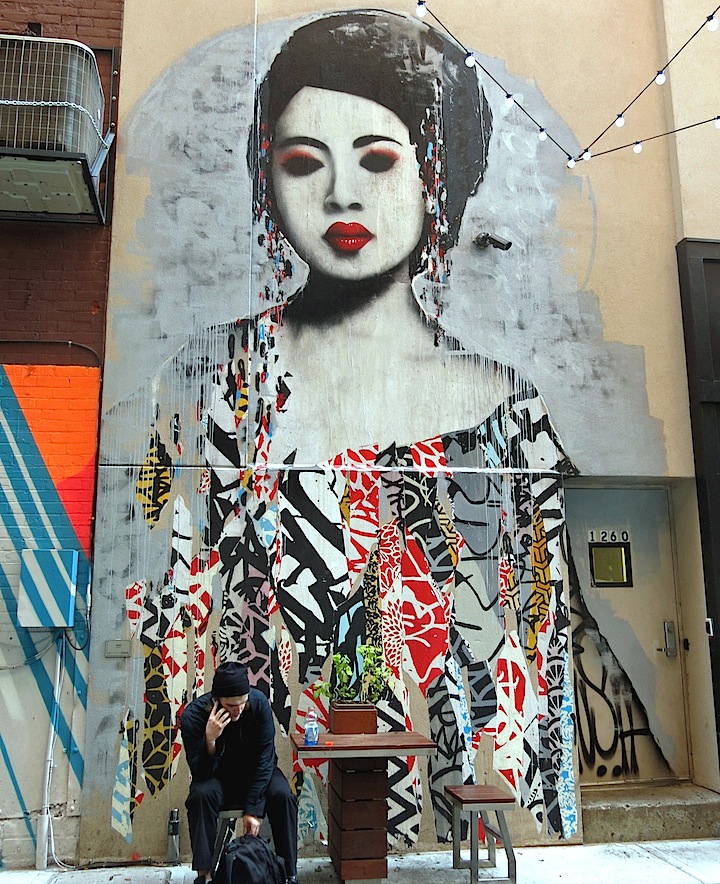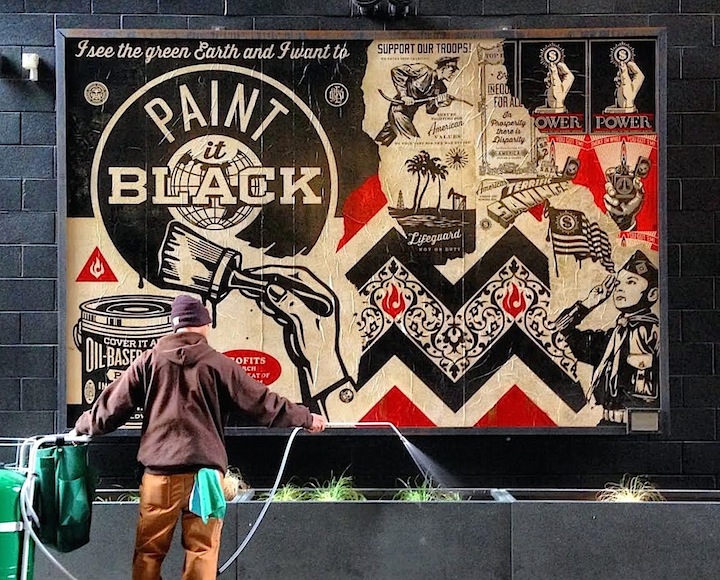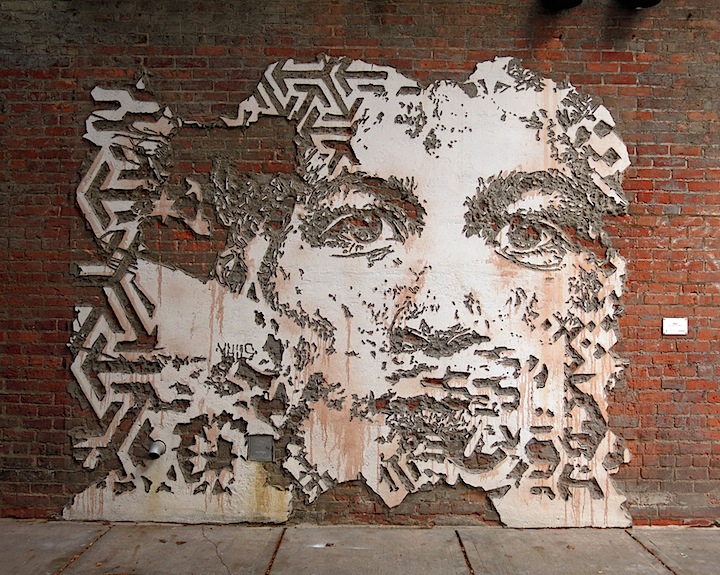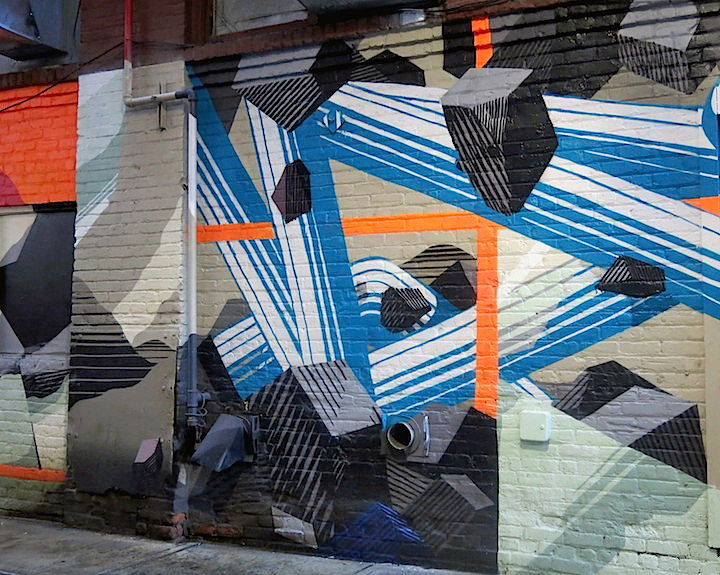Brooklyn-based Sara Erenthal has shared her distinct drawings, public art, sculptures, and mixed media artworks with us New Yorkers for the past several years in both galleries and on the streets. After viewing her current outdoor installation adjacent to FiveMyles, I had the opportunity speak with her:
I love your installation here in Crown Heights adjacent to FiveMyles. When did you first begin to share your talents in public spaces?
About four years ago – soon after I returned to NYC from backpacking in India – I drew 100 small faces with a Sharpie in a range of places from phone booths to subways. It was quite secretive! And, luckily, I was never arrested. These days I can’t take those risks, and I only paint outside on found objects – like abandoned mattresses, castoff furniture, useless appliances and discarded canvases.
Why the streets?
I’ve always loved street art, and I love sharing with others. When I paint on found objects and leave them on the streets, I give people the chance to pick up a free gift. Art should be accessible to the public, and art galleries can be intimidating.
When did you first begin drawing?
I’ve been drawing all my life, and I’ve always loved art. But growing up in an ultra-Orthodox family, I wasn’t exposed to art outside of a few landscapes and portraits of Hasidic rabbis. I never went to museums or galleries. I do remember, though, seeing art that I loved while I was riding the subways as a child!
When were you first exposed to contemporary art – other than what was “permissible” and what you saw on the subway trains?
I was 17, and I had just broken away from my community. A young Israeli artist at the time introduced me to modern African drawings. That was the beginning!
How might your strict religious upbringing have influenced your artwork?
Art was my way of releasing myself from all the constraints that had been imposed upon me. Through art, I was able to let go of the negativity I’d experienced as a child. Creating art was part of my healing process.
Your artwork has a distinct “outsider” aesthetic. Have you ever studied art in a formal setting?
No.
You are obviously fond of creating portraits. Who are these people who surface in your drawings?
Many are me – variations of myself at different stages in my life. They’re self-conscious representations of my subconscious. Others are people I encounter in my everyday life or people from my past who remain with me.
Are you generally satisfied with your work?
Yes – but I’m frustrated that I often lack the time, space and materials to do a fraction of what I’d like to do.
Can you elaborate a bit on some of the challenges you face as an artist?
Yes. Working to meet basic expenses consumes far too much energy and time. I would like to be able to create when I’m inspired. Our society needs to do more to support artists. Artists are undervalued. Most people don’t take artists seriously enough. They tend to perceive what we do as frivolous or self-indulgent. Living one’s life as an artist is not a choice; nor is it an indulgence. And the public needs to understand that.
What do you see as the role of the artist in society?
To share beauty and inspire others, while evoking conversation.
What’s ahead?
I would like to continue to create, heal and share. I would also love to exhibit more works in public spaces and in galleries. And I would like to gain more recognition as an artist.
Note: Sara’s installation, Made On a Borrowed iPad — curated by gallery director Hanne Tierney for the Interlude Project — will remain on view through December adjacent to FiveMyles, 558 St Johns Place in Crown Heights.
The interview was conducted and edited by Lois Stavsky. Photos: 1 Anthony Disparte; 2 – 4 courtesy of Sara Erenthal; 5 & 6 Lois Stavsky
{ 0 comments }
